Are you a Quiet Speculation member?
If not, now is a perfect time to join up! Our powerful tools, breaking-news analysis, and exclusive Discord channel will make sure you stay up to date and ahead of the curve.
The Modern metagame cycles, though the process is slow and hard to see. This complicates determining which trends are just flashes in the pan and which must be accounted for and adapted to. Metagame-specific decks, like Death and Taxes at GP Las Vegas 2017, can look like real decks, at times frustrating players trying to predict a field.
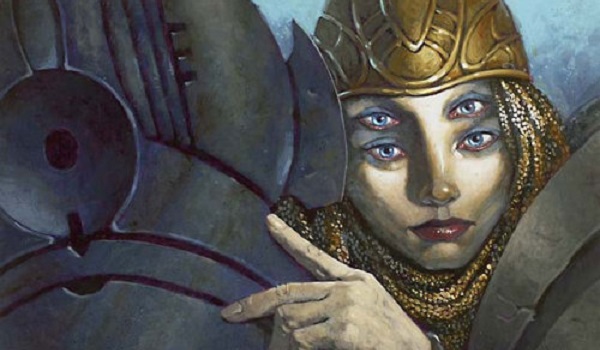
Mistakes along those lines are compounded by how players approach their analysis. How and what data is collected has a huge impact on the final analysis and interpretation of those data. Therefore, the metagame will look different to every analyst. To get a more holistic picture, the scope of the data must be accounted for.
Today, I'll discuss this problem in detail and offer a solution. I think the key is not to look at any piece of datum in isolation, but to look for the persistent short-run trends which represent fundamental changes.
Metagame of the Moment
In keeping with the allure of novelty, much metagame discussion focuses on the most recent results and events. That discussion omits critical information about the overall metagame, yielding a warped picture. In that scenario, an analyst would have data from the most recent Modern events, SCG Baltimore and GP Portland (team events don't really count because they don't measure individual deck strength), and produce these data set from their Top 16 results:
These data indicates that Arclight Phoenix decks are far and away the best decks in Modern. With twice the representation of the second place deck, this is an obvious conclusion. However, it misses the wider context and fails to account for fluctuations or local warps in population.
The Wider Picture
The real effect that thousands of players grinding matches both in paper and MTGO is hard to see, especially since Wizards began curating its released decklists. This change has certainly accomplished Wizards's goal of obscuring an accurate metagame picture to prevent players from "solving" a given metagame too quickly, all while giving brews more visibility. MTGTop8 has tried to account for the data limitation by casting an international net for paper results. Looking at their results and form a data set of top decks over the past two months (top performing being 3% representation or better) provides the following metagame:
In this metagame, Phoenix is one of many also-rans, and I should worry about Spirits and Dredge first and foremost. Their data is far more robust than previously, which should improve the analysis. However, this is still only tracking very recent changes. Sudden bursts of interest have large effects, increasing the odds of warps.
Taking the Long View
Logically speaking, the most accurate data is the broadest and longest. Therefore, these data for all of 2018 might best represent the metagame.
The problem with such a long-term view is that old and dead trends can strongly influence data. Humans and UW dominated in spring and summer, but have slowed down recently. Nevertheless, they remain at the top of the standings thanks to the older data. Phoenix decks aren't present while Mardu Pyromancer, which has almost completely disappeared by now, maintains a significant metagame presence. Too broad an analysis is just as inaccurate as too narrow.
Looking Beyond the Numbers
There's no one way to view the Modern metagame. The format shifts all the time and nothing stays the same forever. Compare 2017's Grixis-and-Eldrazi-dominated metagame to 2018's reign of control and Humans. Stating data isn't sufficient for an accurate picture; we need to identify the scope and scale of the data clearly to find what is happening within that data and how accurately it describes wider trends.
Perspective
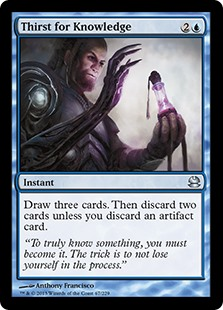 What the metagame looks like depends on how it's looked at. The scope and timeframe of a dataset determines the conclusions that can be derived from that data. In a vacuum, data is just numbers, useless without meaning and context. This analysis can then describe the more persistent and meaningful changes that have happened, which can then be used to predict where the current trends will go.
What the metagame looks like depends on how it's looked at. The scope and timeframe of a dataset determines the conclusions that can be derived from that data. In a vacuum, data is just numbers, useless without meaning and context. This analysis can then describe the more persistent and meaningful changes that have happened, which can then be used to predict where the current trends will go.
Where Are We?
Using that strategy to analyze the metagame helps identify how and when shifts happen. One such shift: I would argue that the data show the older, more interactive metagame making way for newer, more linear decks. What this analysis strategy fails to account for is whether recent shifts and trends will last or how they will actually change the metagame long term.
Looking Ahead
The question all this begs is whether its possible, given limitations, to actually anticipate where the metagame is heading and adapt. Only Wizards of the Coast knows 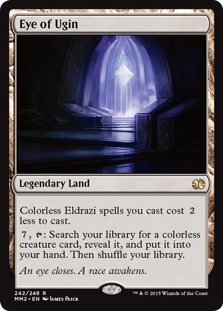 if the next few set releases will drop Khans of Tarkir-level bombshells, release Oath of the Gatewatch-level horrors, or do nothing. However, I think it is possible to make educated guesses. Within reasonable limits.
if the next few set releases will drop Khans of Tarkir-level bombshells, release Oath of the Gatewatch-level horrors, or do nothing. However, I think it is possible to make educated guesses. Within reasonable limits.
In economics we teach that the long-run is normally aggregated from short-run trends, but those short-run trends that prove persistent actually create the long-run. Anything can happen tomorrow, but it may not matter months from now. It takes something that alters the landscape of possibility to actually change the overall field and the long-run equilibrium, like a new technology replacing the old.
This is equivalent to Humans rising in 2017 to take down Storm, and then proving strong enough to define the 2018 metagame. Therefore, focusing on those more impactful threads should indicate where 2019 is headed.
Spirits vs Humans
Starting at the top, the premier aggro deck of 2018 was Humans by a long shot. Just look back at all the coverage we gave the deck. However, just like Grixis Death's Shadow the previous year, it eventually fell out of favor toward the end of the year as players adapted and learned how to fight back. Unlike Death's Shadow, Humans is also facing competition from a similar deck in Spirits.
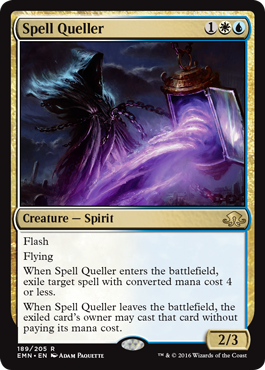 On the surface, it appears that Spirits could simply replace Humans. Many have caught on that Spirits is favored head-to-head, and its greater sideboard flexibility is a huge advantage.
On the surface, it appears that Spirits could simply replace Humans. Many have caught on that Spirits is favored head-to-head, and its greater sideboard flexibility is a huge advantage.
However, that isn't the whole story. Spirits is better in a fairer metagame because hexproof and Collected Company are relevant. The more unfair and combo-based things become, the better the cheaper, persistent disruption of Humans gets. Plus, there's a greater likelihood of playable Humans being printed than Spirits.
My prediction is that Spirits will seize and withhold the top aggro deck position from Humans until Storm-style combo starts to rise again. Storm was the reason Humans gained traction in the first place, and there's no reason to think it won't happen again if linear combo resurfaces. Therefore, I predict Spirits will be the default disruptive aggro deck going forward, and Humans the metagame choice when more disruption is necessary.
Graveyard Decks
After a stunning revival, players' enthusiasm for Dredge appears to have cooled. A month ago, Dredge was being praised and getting all the Top 8s. This month, it didn't even Top 16.  This is understandable, as previously players weren't ready and didn't have their graveyard hate. This has been corrected and Dredge is being hated out.
This is understandable, as previously players weren't ready and didn't have their graveyard hate. This has been corrected and Dredge is being hated out.
However, you can never fully hate away Dredge, and it will remain a factor in Modern. It simply won't be consistent. What I saw over 2018 was a proliferation of graveyard decks, then a reaction which has slowly pushed them back. While players are more conscientious of the need for hate, as they should be, the immediacy will fade and the Dredge Cycle will begin anew. I don't expect Dredge to maintain any presence at the top of the metagame in 2019, but it will always lurk in the background and strike when nobody's looking, just as Affinity did for years. My advice: don't fear Dredge, but don't forget it, either.
Control Remains
I have every confidence that UWx Control will remain a major player in Modern next year. What form it will take is impossible to say. Straight UW has certain advantages over the other variants, as they do over UW, and the overall metagame will decide which is best. In any case, UWx simply has too many tools at this point to disappear into Tier 3. Whatever happens to the metagame, control has the means to counter it and pull ahead on cards, be it with planeswalkers, and Ancestral Vision, or Terminus. I believe that Jeskai will be the version of choice as the value of Anger of the Gods is rediscovered and Terminus loses favor as too uncontrollable.
Workhorses
Burn and Jund were solid decks all year long, with their short- and long-term numbers being equal. They're not flashy or particularly press-worthy, but they clearly get the job done. Therefore, I expect them to remain players in roughly the same proportion though the next year. Burn will always be around, ready to pounce on greedy painful mana and slower, uninteractive decks.
Jund's been boosted by Bloodbraid Elf and it's closer to actually being 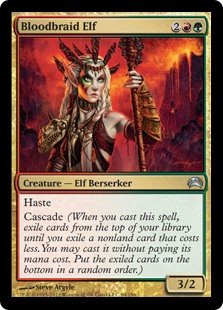 ~50% against everything, even Tron, as a result. Don't forget these decks in the glow of the popular decks and Hottest New Thing. Mastery and practice are the cornerstones of Modern success, and Jund and Burn pilots have plenty of both.
~50% against everything, even Tron, as a result. Don't forget these decks in the glow of the popular decks and Hottest New Thing. Mastery and practice are the cornerstones of Modern success, and Jund and Burn pilots have plenty of both.
Affinity is also holding fairly strong, though not in the same form as it started. Only traditional Arcbound Ravager Affinity roamed at the beginning of the year, but Hardened Scales now dominates the robot world. While somewhat less explosive than the older version, Scales makes up for it by being far more overwhelming. The problem, I'm told, is that without the namesake card, Scales Affinity can be quite clunky. Despite this, the fact that it's less vulnerable to Stony Silence remains a huge plus.
I believe that Scales will be the default Affinity deck for this reason. However, I think that its overall stock will fall over time unless the problem of of missing Hardened Scales can be fixed. Without that explosive boost, it appears to be too inconsistent for long-term success.
The Unknown
Up next is Arclight Phoenix. Phoenix's similarities to Hollow One are striking, and while data show that deck doing well overall, its been declining recently. Phoenix appears to have improved the strategy by removing the random discards, and recent wins and coverage give it the visibility to draw in players. However, the deck is very new and feels unfinished. This may not be a problem, as the high-velocity, low-threat style deck is popular in Legacy and players have wanted it to work in Modern for some time. They'll find the right list, and Phoenix will see play for the foreseeable future. The question is whether it will remain a relevant part of the metagame, and I'm skeptical.
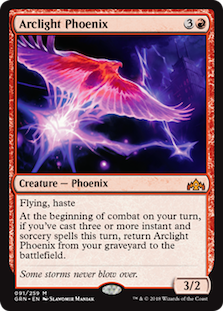 I think Phoenix decks must answer two questions. The first is whether the card can survive increased attention. Phoenix decks get most of their value by burning through their deck and then smashing with several hasty birds early. When that doesn't happen, the deck just durdles until it makes a big but very vulnerable threat in Awakened Horror or Crackling Drake.
I think Phoenix decks must answer two questions. The first is whether the card can survive increased attention. Phoenix decks get most of their value by burning through their deck and then smashing with several hasty birds early. When that doesn't happen, the deck just durdles until it makes a big but very vulnerable threat in Awakened Horror or Crackling Drake.
Players will soon learn that taxes are effective at beating the engine. Jund will discover that Surgical Extraction on Arclight Phoenix, and Fatal Push on everything else, is crippling. Any deck can dance on stage, but only a few can withstand the spotlight. If Phoenix can't withstand actual scrutiny, it will fall into niche status.
The other question is survival. Faithless Looting has been enabling some pretty ridiculous stuff, from Hollow One to Dredge to Phoenix this year. It's definitely on Wizards's radar as potentially bannable (even if only because of players screaming about it). In the possible-though-unlikely event that Looting gets axed, can Phoenix decks survive? In their current form, probably not; there's nothing else as efficient for digging and dumping Phoenixes.
Change is Constant
Nothing remains fixed forever. Things will happen in the Modern metagame that nobody can predict, because there are always surprises in a Magic year. However, analyzing current trends provides some guidance, and watching for trends that persist over time provides a more accurate metagame picture. My advice for reading and watching the metagame is to have some perspective and not get swept up in the hype.





I would like it noted that Jon Finkel said that he thought Storm would be a *great* choice in a 60% humans metagame. http://www.starcitygames.com/articles/37599_Why-I-Chose-Storm-For-Pro-Tour-25th-Anniversary.html
Yes, most Storm players aren’t Jon Finkel, but I imagine that at least for the most talented Storm pilots, Humans is a manageable matchup. Also from my experience with Bant Spirits, Storm was a fine matchup especially once the sideboard got involved. However, I don’t have a ton of experience in that matchup, only a few matches.
True, Storm wasn’t the worst if you were Jon Finkel or Caleb Scherer, however it did rely on getting lucky. Human’s best draws lined up too well for Storm to really power through and the strategy that Caleb used was to Bolt the disruption and then Pieces of the Puzzle his way into a win before Humans clocked him. This could work, but it was still dicey.
Spirits of any stripe isn’t bad against combo, it simply isn’t as good as Humans. Mausoleum Wanderer and Spell Queller are respectively soft and slow compared to Meddling Mage and Kitesail Freebooter against combo. I’m perfect comfortable against combo with UW, but not quite as strong as Humans players.